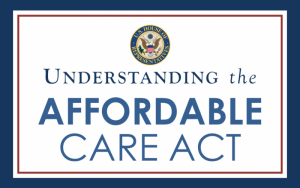Affordable Care Act (Obamacare)
Affordable Care Act
The Affordable Care Act, often shortened to the ACA and nicknamed Obamacare, is a United States federal statute enacted by the 111th United States Congress and signed into law by President Barack Obama on M arch 23, 2010.
arch 23, 2010.
The purpose of the Affordable Care Act is to remedy these discrepancies in the American healthcare industry and increase consumer rights and protections. Insurers are now required to offer plans for people with pre-existing conditions, and the costs associated with health insurance will now be regulated more closely. This allows the ACA to open healthcare access to millions of people who otherwise wouldn’t have access. Even those who already had insurance will benefit from the ACA. Under the healthcare law, insurance now has to cover a lot of basic treatments and situations that your insurance may not have covered before.
You don’t have to choose a marketplace plan to make a difference when it comes to providing health insurance for those in need; any plan helps create more options for more people. Prior to the ACA, there were approximately 45 million Americans who did not have any kind of health insurance. These people included low- to middle-income families, senior citizens, and women who had to pay more for basic preventive services. It’s important to keep in mind that a person can’t sign up for an ACA policy outside of Open Enrollment unless there is a qualifying event such as losing other coverage, getting married, or having a baby.
The Affordable Care Act seeks to provide these people with the coverage they need to prevent common illnesses and conditions. The ACA also provides for the standardization of coverage and benefits, as well as the regulation of insurers and healthcare providers. If you’re interested in learning the specifics of how this law improves modern healthcare in America, then check out the ACA’s official site or our articles on individual aspects of the law.
The law has 3 primary goals:
- Make affordable health insurance available to more people. The law provides consumers with subsidies (“premium tax credits”) that lower costs for households with incomes between 100% and 400% of the federal poverty level.
- Expand the Medicaid program to cover all adults with income below 138% of the federal poverty level. (Not all states have expanded their Medicaid programs.)
- Support innovative medical care delivery methods designed to lower the costs of health care generally.


